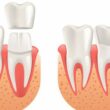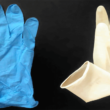Difference Between Mackerel And Sardine
Mackerel
The name mackerel is applied to several species in the mackerel and tuna family, Scombridae, and to at least two species in the jack family, Carangidae. Those of the family Scombridae include the true mackerels, Scomber, the Spanish mackerels, Scomberomorus, the frigate mackerels, Auxis, and the pygmy mackerels, Rastrelliger. The jack family mackerels, Trachurus, are horse mackerels and jack mackerels.
The Atlantic mackerel, Scomber scombrus, is found on both sides of the North Atlantic. It averages between 35 and 45 cm (14 to 18 in) long and about 500 g (1 lb) or less in weight. The Atlantic mackerel has silvery blue sides, a greenish blue back marked with 23 to 33 wavy black lines, and white undersides. Its scales are tiny and barely discernible. There are two widely separated dorsal (upper) fins and 4 to 6 finlets running from both the second dorsal fin and the anal (bottom rear) fin to the tail. The teeth are small, and there is no air bladder. Atlantic mackerel spawn in the spring and early summer, and each female may lay half a million eggs. Each egg contains an oil droplet and tends to float at a depth of 7 to 9 m (20 to 30 ft) and may hatch in 96 hours. In warmer months mackerel travel in large schools offshore, feeding on shrimplike crustaceans, fish, and squid. During the winter, mackerel are inactive, spending much time in trenches or gullies on the sea bottom, where it is thought they feed little, if at all. Atlantic mackerel live to about 20 years of age.
Mackerel are oily, dark-meated fish, more popular as food in Japan, Europe, and developing countries than in the United States. The commercially important mackerels include the Pacific, chub, Atlantic, and Spanish.
Sardine
Sardine, any of a variety of small fishes of the herring family, Clupeidae, widely used as a canned food. Sardines are free-swimming, fast-moving fishes that inhabit the open and upper waters of the seas. They are generally iridescent, with silvery bellies and green or blue backs sometimes spotted with black.
Along with the herring, sardines are among the most primitive marine fishes. Anatomically they are distinguished, for example, by a two-lobed nonfunctional lung. They are true bony fishes (teleosts) with one short dorsal fin near the middle of the back, no lateral line, and no scales on the head.
Sardines, together with herring and menhaden, feed on plankton. In the North Sea about 2 million tons (net weight) of herring consume from 50 to 60 million tons annually of zooplankton—minute crustaceans, larval forms, and fish eggs.
Important sardine fisheries are also found in the United Kingdom, Norway, Denmark, Sweden, Finland, Portugal, France, Spain, South Africa, and Iceland. The fish are handled differently and the seasons are different in each country.



